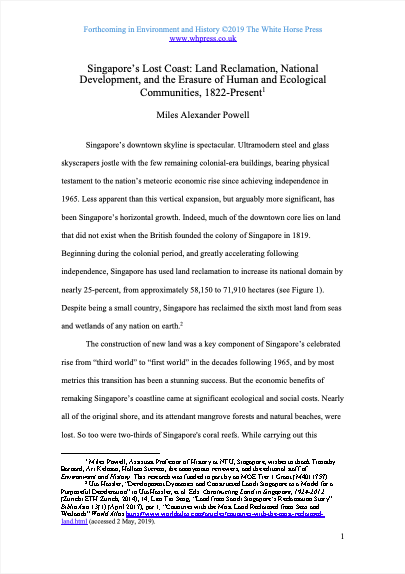Singapore’s Lost Coast: Land Reclamation, National Development and the Erasure of Human and Ecological Communities, 1822–Present
Beginning during the colonial period, and greatly accelerating following independence in 1965, Singapore has used land reclamation to increase its national domain by nearly 25 per cent. The construction of new land was a key component of the nation’s celebrated rise from ‘third world’ to ‘first world’ in the postcolonial period. But the economic benefits of remaking Singapore’s coastline came at significant ecological and social costs. Nearly all of the original shore, and its attendant mangrove forests and natural beaches, were lost. So too were two-thirds of Singapore’s coral reefs.




